When it came to customer data, instead of drinking from the fountain of knowledge, brewer and pub chain Marston’s was alarmed to be watching most of it trickling down the drain. The company realised it should get to know its customers and build a relationship with them. Here’s how they did it:
A customer could spend many minutes happily interacting with a brand through a variety of touchpoints, each experience taking them closer to their end goal. Within one transaction, or interaction, a customer may feel satisfied. However, all it takes is one negative experience to damage the memory of the entire experience and the association with the brand, which ultimately leads to a disengaged customer. How do you prevent this from happening?
Improve the customer experience? It sounds simple. Unfortunately, it isn’t. You can’t manage experiences and how your customers feel. Instead you must manage something quantifiable.
Customer engagement may sound like another marketing buzzword. However, how a customer perceives their interactions with your brand is important and it is this flow of experiences that drives engagement. Engagement provides a broader context for how to drive value for your brand and your customers. In order to nurture the ongoing relationship between business and customer you must sit up and start taking notice of customer engagement. At least monitor it. Still not convinced? Its applicability in real life can be demonstrated with a case study on Marston’s ale.
Bringing a buzz back to Britain’s locals
Despite Brits’ reputation for enjoying a beer, UK pubs have struggled over the last decade. Research by Alix Partners shows UK licensed premises fell 1.2% in the 12 months leading up to March 2017, following years of steady decline.
It’s tough for British pubs to compete with easily ordered takeaways, box set binges and the beers we drink at home. However, Marston’s, an established brewer and pub chain, decided to embrace technology to bring the buzz back to its premises.
Marston’s wanted us to help them to ‘bring social back’ to their pubs. We were more than happy to oblige!
ONE for the road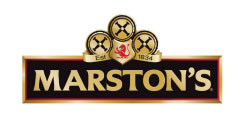
Marston’s brewery and pubs have been welcoming people through their doors for more than 175 years. But when it came to customer data, most of it was falling flat or trickling away. Marston’s used our ONE Engagement Hub to help them get more people through the doors and encourage them to stay for longer.
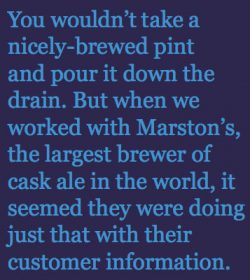 ONE joins up web, mobile, physical and contact centre customer experiences, connecting them with brands’ existing systems to give them a 360-dgree view of their customers. It then allows brands to act on the right customer need at the right time by delivering relevant real-time conversations based on their journey context. Customer relationships can be effectively managed at scale so brands like Marston’s can interact with customers as individuals, creating effortless personal engagement.
ONE joins up web, mobile, physical and contact centre customer experiences, connecting them with brands’ existing systems to give them a 360-dgree view of their customers. It then allows brands to act on the right customer need at the right time by delivering relevant real-time conversations based on their journey context. Customer relationships can be effectively managed at scale so brands like Marston’s can interact with customers as individuals, creating effortless personal engagement.
As well as increasing the number of customers, ONE helped Marston’s build better relationships in the process. By unlocking and understanding online insight, it was able to create a single view of the customer that was joined up across channels and then take the appropriate action to help provide customers with a completely personal experience for every one of their customers.
This not only sets Marston’s apart from the majority of pubs, it sets them apart from the majority of businesses. While 73 per cent of marketing executives routinely collect information about current customer behaviour, only 37% use this information for marketing purposes, according to a survey by the Economist Intelligence Unit (EIU).
Marston’s customer lock-in
We helped Marston’s match website and email interactions to specific customer records for nearly 20,000 customers and look at the anonymous activity for many, many thousands more.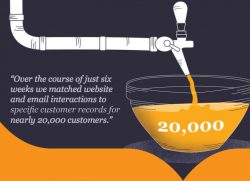
Previously, these were all anonymous and untapped, so Marston’s was missing chances to understand those customers. Then we made things more personal – for customers that remained anonymous and those we matched to a customer record. If they browsed for a specific craft beer, such as Wychwood, on the Marston’s website, they would see features, offers and messages relevant to that beer.
The result: a response rate that was six times larger, compared to watered down default experiences. Using different channels to build up a complete picture of customers meant we could begin to understand what they needed.
If a customer viewed a children’s menu on a pub page, it suggested they had children (or a tiny appetite). Then we could approach them with relevant information about children’s facilities or menus, rather than clumsily sending them generic offers.
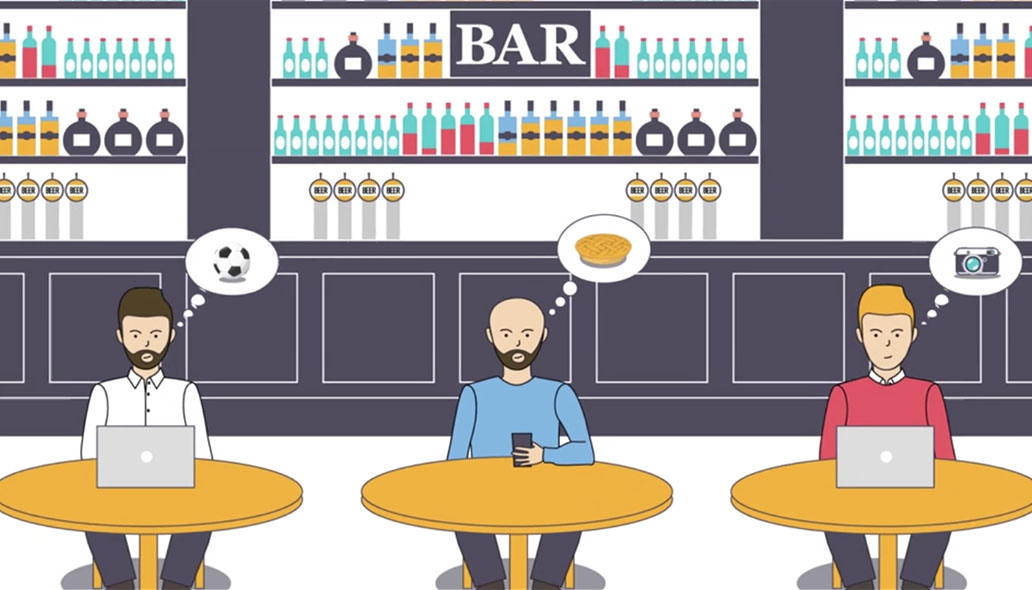
We gathered thousands of customer insights, including children’s menu views, beer and pub preferences, customer locations and even sentiment, based on feedback interactions. These were all linked to customer records, bringing them into sharper focus.
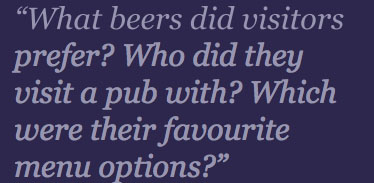 Even with such limited activity, we made sense of a huge amount of useful information and then took it even further. By paying attention when customers connected to Marston’s wi-fi, we could learn even more about their preferences and, crucially, join up the customer journey across the website, email and physical locations.
Even with such limited activity, we made sense of a huge amount of useful information and then took it even further. By paying attention when customers connected to Marston’s wi-fi, we could learn even more about their preferences and, crucially, join up the customer journey across the website, email and physical locations.
Furthermore, the data they gathered could work much smarter. By measuring how customers reacted to personalised emails, future marketing could be tailored to their individual journey and needs. It even allowed their serving staff to make menu suggestions based on customer insights, like: “We have some new pies today, for our dedicated pie fans.”
Everyone’s favourite local
All this creates a bond with customers that’s effortless and makes Marston’s feel more like your favourite local – the place where the landlord knows exactly who you are and what you want. What’s in it for Marston’s? As well as turning customers into fans, the initial results suggested that we’d easily connect with nearly 200,000 customers in a year.
Marston’s chief information officer, Mike McMin (pictured), commented: “It’s been quite remarkable; we’ve found out quite a lot about our customers that we didn’t know before.
“From the activity of the user on the website we are able to find out about individual preferences, likes and dislikes. So marketing we produce targeting those individuals will be more precise and more personal.
“We have been able to pick up all of those preferences and to learn something about the customer – that’s the important bit really, because you can’t make friends with someone unless you know something about them.”
With most companies striving to learn as much as they can about their customers, brands should aim to understand their individual customer journeys and give customers something they’ll value each and every time they interact, which will ultimately result in engaged customers and better, more valuable, relationships.
Marston’s is proof that the use of technology and insight can have a significant impact on customer engagement, helping to revive the UK’s pubs and the communities that love them.
Have an opinion on this article? Please join in the discussion: the GMA is a community of data driven marketers and YOUR opinion counts.
Read also:
On target: how to improve digital campaign accuracy
Increasing customer engagement: case study

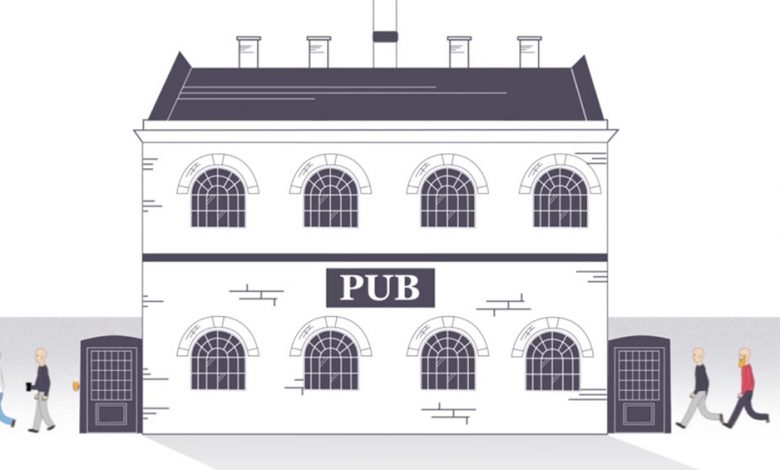

 ONE
ONE

 Even with such limited activity, we made sense of a huge amount of useful information and then took it even further. By paying attention when customers connected to Marston’s wi-fi, we could learn even more about their preferences and, crucially, join up the customer journey across the website, email and physical locations.
Even with such limited activity, we made sense of a huge amount of useful information and then took it even further. By paying attention when customers connected to Marston’s wi-fi, we could learn even more about their preferences and, crucially, join up the customer journey across the website, email and physical locations.



Leave your thoughts